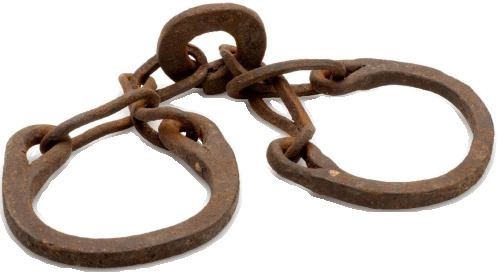 | ||
The Igbo in the Atlantic slave trade became one of the main ethnic groups enslaved in the era lasting between the 16th and late 19th century. Located near indigenous Igbo territory, the Bight of Biafra (also known as the Bight of Bonny), became the principal area in obtaining Igbo slaves. The Bights major slave trading ports were located in Bonny and Calabar; a large number of these slaves Igbo. Slaves, kidnapped or bought from fellow Africans, were taken to Europe and the Americas by European slave traders. An estimated 14.6% of slaves were taken from the Bight of Biafra between 1650 and 1900, the third greatest percentage in the era of the transatlantic slave trade.
Contents
Ethnic groups were fairly saturated in certain parts of the Americas because of planters preferences in certain African peoples. The Igbo were dispersed to colonies such as Jamaica, Cuba, Haiti, Barbados, United States, Belize, Trinidad and Tobago among others. Elements of Igbo culture can still be found in these places. In the United States the Igbo were found common in the state of Maryland and Virginia.
Effects
It is estimated that a total of 1.4 million Igbo people were transported (via European ships) across the Atlantic in the era of Atlantic slave trade. Most of these ships were British.
Dispersal
Some recorded populations of people of African descent on Caribbean islands recorded 2,863 Igbo on Trinidad and Tobago in an 1813 census; 894 in Saint Lucia in an 1815 census; 440 on Saint Kitts and Nevis in an 1817 census; and 111 in Guayana in an 1819 census.
Barbados
The Igbo were dispersed to Barbados in large numbers. Olaudah Equiano, a famous Igbo author, abolitionist and ex-slave, was dropped off there after being kidnapped from his hometown near the Bight of Biafra. After arriving in Barbados he was promptly shipped to Virginia. At his time, 44 percent of the 90,000 Africans disembarking on the island (between 1751 and 1775) were from the bight. These Africans were therefore mainly of Igbo origin. The links between Barbados and the Bight of Biafra had begun in the mid-seventeenth century, with half of the African captives arriving on the island originating from there.
Haiti
Some slaves arriving in Haiti included Igbo people who were considered suicidal and therefore unwanted by plantation owners. According to Adiele Afigbo there is still the Creole saying of Ibos pend'cor'a yo (the Ibo hang themselves). Aspects of Haitian culture that exhibit this can be seen in the Ibo loa, a Haitian loa (or deity) created by the Igbo in the Vodun religion.
Jamaica
Bonny and Calabar emerged as major embarkation points of enslaved West Africans destined for Jamaica's slave markets in the 18th century. Dominated by Bristol and Liverpool slave ships, these ports were used primarily for the supply of slaves to British colonies in the Americas. In Jamaica, the bulk of Igbo slaves arrived relatively later than the rest of other arrivals of Africans on the Island in the period after the 1750s. There was a general rise in the amount of enslaved people arriving to the Americas, particularly British Colonies, from the Bight of Biafra in the 18th century; the heaviest of these forced migrations occurred between 1790 and 1807. The result of such slaving patterns made Jamaica, after Virginia, the second most common destination for slaves arriving from the Bight of Biafra; as the Igbo formed the majority from the bight, they became largely represented in Jamaica in the 18th and 19th century.
United States
In the United States the Igbo slaves were known for being rebellious. In some states such as Georgia, the Igbo had a high suicide rate. Igbo slaves were most numerous in the states of Maryland and Virginia,
In the 19th century the state of Virginia received around 37,000 slaves from Calabar of which 30,000 were Igbo according to Douglas B. Chambers. The Frontier Culture Museum of Virginia estimates around 38% of captives taken to Virginia were from the Bight of Biafra. Igbo peoples constituted the majority of enslaved Africans in Maryland. Chambers has been quoted saying "My research suggests that perhaps 60 percent of black Americans have at least one Igbo ancestor..."
